Hair Removal
About Laser Therapy for Hair Removal
Laser therapy has revolutionized treatment of unwanted body hair. Traditional hair removal techniques such as shaving, plucking and waxing, provide only temporary relief. Electrolysis, while effective and ideal for white, grey and blonde hairs, often requires years of ongoing and frequently painful treatments. The traditional methods often result in scarring, allergic reactions, and ingrown hairs.
Laser hair removal works by targeting the pigment inside the hair follicle without damaging other skin structures. Only actively growing hairs are targeted. Because hair cycles through both "growth" and "dormant" phases, at least 5 treatments are necessary. We recommend a series of five treatments before long-term results are established. Maintenance treatments are often necessary. In addition, hormonal treatment may be necessary for some patients.
| Before Laser Treatment | After Laser Treatment |
 |
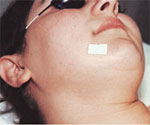 |
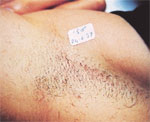 |
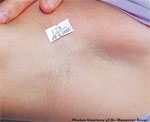 |
 |
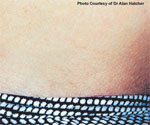 |
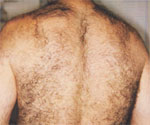 |
 |
| Maintenance treatments were required in these cases. | |
| Photos courtesy of Candela Laser Corporation. | |
| Individual results may vary. | |
What does the treatment involve?
Patients are given a pair of goggles for eye protection. A small handpiece or "wand" is placed against the skin and the laser is activated. The laser is equipped with a spray cooling device delivered prior to the laser beam. The cooling spray decreases the pain and side effects of the laser. The handpiece is repositioned and the laser is activated again. The size or the area treated will determine the number of laser pulses required. It is very important that the hair is not waxed or plucked in the period immediately prior to laser hair removal for all skin types.
How many sessions are needed?
The number of sessions will vary for each individual. This is dependent on the color, size and location of the unwanted hair. During the initial visit, the laser light disables those follicles in the "active" phase of the growth cycle. Follicles in the "dormant" phase will not be permanently affected. Since follicles cycle through "active" and "dormant" phases, additional sessions may be desired once the "dormant" follicles become "active." For this reason, multiple treatments will be necessary. Regrowing hairs are usually lighter and thinner. It is best to return as soon as new hair growth is apparent. Once the decreased density is achieved, maintenance treatments are recommended approximately once a year. The number and intervals of treatments varies from one patient to another.
Are tanned and dark skin types candidates for laser hair removal?
Yes. The current technology allows treatment of darker skin with unprecedented safety and efficacy.
Are the treatments painful?
While some areas of the body are more sensitive than others, most patients report manageable discomfort. For the more sensitive patients, anesthetic creams can be applied prior to the treatment. The Dynamic Cooling Device (DCD), attached to the laser, sprays liquid cryogen onto the skin simultaneously with each laser pulse to alleviate the slight sting of the laser pulse. This system minimizes the level of discomfort during treatment.
Are there any side effects?
Immediately after the treatment the skin will look pink and slightly swollen, similar to a sunburn. This will subside within an hour or two and the skin will return to normal. Occasionally, a patient will have temporary pigment changes, blistering, or scabbing. As with electrolysis, cases of scarring have been reported with laser hair removal for all skin types, but these are extremely rare. A test spot is the best determinant of how each individual's skin will react.
How much does it cost?
Because the same area on each person may vary in terms of the size of the area that actually needs treatment, it is virtually impossible to establish a set price list. Prices for specific treatments can be obtained through a cosmetic consultation.
